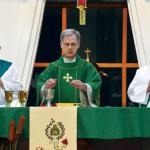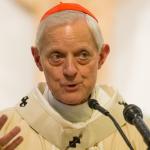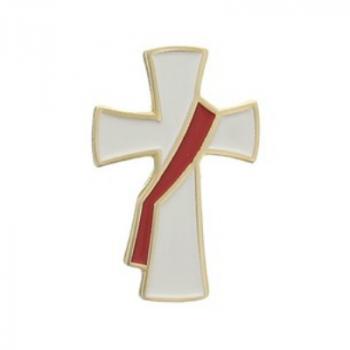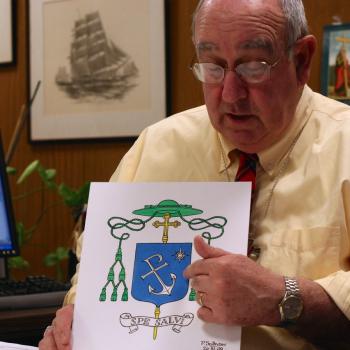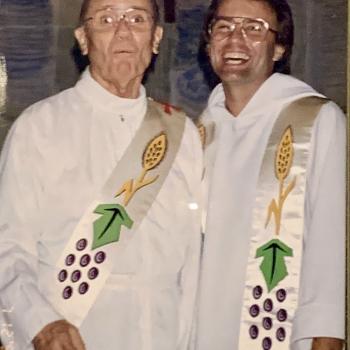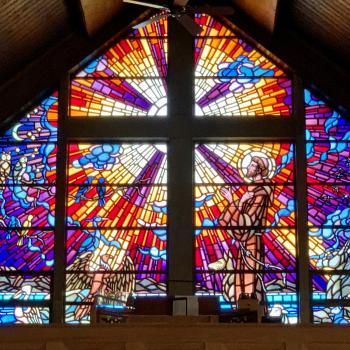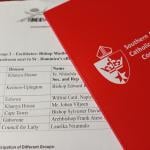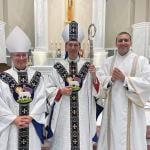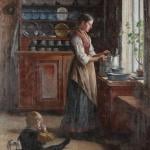Fordham University last night hosted a symposium on women deacons that featured two members of the papal commission on this subject who, for the first time, spoke publicly about their research. You can watch a video of this, from ta livestream, hosted by Salt + Light, below.
Meantime, America magazine spoke with the commission members, as well:
Women served as deacons in Europe for about a millennium in a variety of ministerial and sacramental roles, according to Phyllis Zagano, an author and professor of religion at Hofstra University, and Bernard Pottier, S.J., a faculty member at the Institut D’Études Théologiques in Brussels, in an interview this week with America. “They anointed ill women; they brought communion to ill women,” said Ms. Zagano.
They also participated in baptism, served as treasurers and, in at least one case, participated in an annulment.
Discussing that annulment, Ms. Zagano said a woman in Syria “complained that her husband was beating her. It was the woman deacon who examined the bruises and gave the testimony to the bishop. Well, to me, that’s an annulment—she is providing the information.”
“But to say that everybody did the same thing all over I think is disingenuous,” Ms. Zagano added.
Father Pottier said he was able to find strong evidence of women deacons in church records and histories, but “not everywhere and not always because it was also a choice of the bishop.”
In an interview with Michael J. O’Loughlin, America’s national correspondent, on Jan. 14, Ms. Zagano and Father Pottier, who serve on the Vatican’s Study Commission on the Women’s Diaconate, discussed their research on women deacons and the early church. They emphasized that roles for women deacons varied greatly depending on geography. The two commission members were in New York for a symposium at the Fordham Center on Religion and Culture called “The Future of Women Deacons,” which convened on Jan. 15.
Ms. Zagano said, “There was ordination…. The most interesting evidence is the fact that the ordination ceremonies [we discovered] for women deacons were identical to the ordination ceremonies for men.”
Father Pottier said women began to serve as deacons “very early” in the Eastern church but by the 10th century that ministry ended. In the West, women served as deacons from approximately the fifth century until the 11th or 12th century.
And Crux has this:
Both Zagano and Pottier discussed the historical evidence regarding women deacons, noting that for millennia, women were ordained in such a capacity. While acknowledging that there have been differing opinions as to the nature of the ordinations and whether one was considered “blessed” or “ordained,” they insisted that the terms have historically been used interchangeably.
Further, they recalled that there were specific liturgies for women deacons being ordained, with women and men serving different roles in their capacity as deacons.
Pottier said that over 800 books and scholarly articles have been written on this historical debate that amount to “various kinds of evidence of true ordination” of women deacons over a span of twelve centuries.
He went on to insist that this is a different question than that of women priests, saying “it is true” that women have never been ordained to the Catholic priesthood.
The role of the permanent diaconate was restored during the Second Vatican Council (1962-65), and the number of deacons since that time has swelled to over 45,000 worldwide, with 18,000 in the U.S. alone.
Both Popes John Paul II and Benedict XVI have faced the question of women’s deacons, with neither signing off on it. Pottier observed that a 2002 report said it was “something the magisterium would have to decide,” referring to the Church’s teaching authority – leaving it an open question for Francis, hence the new commission.
Pottier said the commission under Francis has been able to shed “more and more evidence that it was so,” regarding the historical question of the role of women’s ordination of deacons.
Ciangio, representing a “people in the pew” perspective, offered a disclaimer that she could not speak for the 19,000 parishes across the United States, but recalled her experience of helping lead a study group exploring the question of women deacons based on a book by Zagano.
She said that she has repeatedly faced questions by Catholics over why women – who do the bulk of teaching – are unable to preach.
Reflecting on her childhood, when women were first granted the ability to serve as Eucharistic ministers, “I believed anything in the Church was possible for women,” she said.
“I’m forever open, hopeful, and hoping more will happen,” she continued.
Finally, there is this insight, from Caitlin Marchand two years ago:
Deaconesses of old fulfilled a role required by the times in which they lived. Our times too present unique challenges to female Catholics. Perhaps this period in our history requires that women serve women in a particular and official way within the Church. The exciting news is that, whether deaconesses return or not, women don’t need to wait to begin fulfilling these needs. All over the country and indeed the world women are teaching NFP, reforming marriage prep, founding crisis pregnancy centers, developing support programs for postpartum depression, and reaching out to their friends and family to provide loving support in the difficult work of being a Catholic woman in a hostile world. Still, a dedicated order of women educated, blessed, and spiritually nourished by the Church and serving in parishes across the world would be a great gift and service to all their sex.

